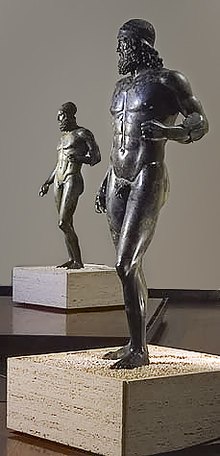GLAM/Newsletter/August 2022/Contents/Italy report
|
Italian institutions ever closer to Wiki Loves Monuments
This year in Italy Wiki Loves Monuments is organized by Wikimedia Italia together with Istituto Italiano dei Castelli (we talked about it on February, here) with the collaboration of FIAF and the patronage of Conferenza delle Regioni e delle Province Autonome, ANCI (National Association of Italian Municipalities), ICOM Italia (International Council of Museums) and Europa Nostra(is recognised as the largest and the most representative heritage network in Europe).

For the first time, the contest in Italy will have a common theme: castles and fortifications.Thanks to the collaboration with Istituto Italiano dei Castelli, a great many of these monuments will be photographable for the first time this year, and the ambitious but not impossible goal is to collect at least one photo of each castle, thanks to everyone's help. Indeed, the Italian edition confirms itself as a valuable collaborative tool for digital documentation of monuments: since 2012, some 8,750 participants have uploaded more than 165,000 photographs to Wikimedia Commons, choosing from more than 17,300 photographable monuments and cultural properties, even more in 2022.
In addition to several public administrations and religious bodies, important Italian cultural istututions have joined this year. Below are some new additions to the Wiki Loves Monuments Italia family (many of them in Calabria):
- Museo Archeologico Nazionale di Reggio Calabria: museum in Reggio Calabria, southern Italy, housing an archaeological collection from sites in Magna Graecia. The most notable of its collections include the two large, well-preserved 5th century BC Riace bronzes, found in the province of Reggio, are thought to be the most significant bronze sculptures from the Greek period and among the few survivors of works by its master sculptors.

- Galleria nazionale di Cosenza: a picture gallery consisting of the collection of paintings and works that, since the 1980s, have been acquired to the state's heritage is permanently located in the museum and documents significant moments of Italian art, particularly southern art, from the 16th to the 20th century.
- Museo archeologico lametino: archaeological museum that houses numerous artifacts found at various sites in the Lametine plain through which it is possible to follow the historical dynamics of the area from the Paleolithic to the late medieval age.
- Scolacium (an ancient seaside city in Calabria): the Archaeological Park is located in Roccelletta di Borgia; few remnants remain of the pre-Roman settlement, unlike the Roman and Late Antique layout, of which the main monuments such as the Forum, theater and amphitheater (the only example of a Roman amphitheater found in Calabria) stand out.

- Museo archeologico statale Vito Capialbi: is located in the Swabian Castle of Vibo Valentia. The museum is divided into four main sections: artifacts from sacred buildings, necropolis, private collections, and the Roman-era materials.
- Le Castella: coastal village known mainly for its fortress surrounded by the sea and its coastline consisting of beaches and reefs of various types. Marine flora and fauna are protected by the Capo Rizzuto marine protected area, the largest in Italy.
- Museo archeologico nazionale di Crotone: a museum located in the medieval walled city, corresponding to the acropolis of ancient Kroton.
- Area archeologica di Capo Colonna: a ruined ancient Greek temple dedicated to Hera (Juno) located on Capo Colonna in Calabria,
- Cattolica di Stilo: this Byzantine church in the comune of Stilo is one of the most important examples of Byzantine architecture
- Parco archeologico di Sibari: is located in Cassano all'Ionio, in the hamlet of Sibari, locality Parco del Cavallo, Casa Bianca, in the province of Cosenza. It is the site of one of the richest and most important Greek cities of Magna Graecia. Finds from the excavations are preserved in the National Archaeological Museum of the Sibaritide.
- Museo archeologico nazionale della Sibaritide
- Museo archeologico statale Vincenzo Laviola
- Museo nazionale della montagna, Turin.
- Museo diffuso della Resistenza, della deportazione, della guerra, dei diritti e della libertà
- The National Automobile Museum, Turin
- Museo del carcere Le Nuove, Turin
In addition, two universities join the list: University of Ferrara and University of Padua.
- Albania report
- Australia report
- Brazil report
- Estonia report
- Germany report
- Indonesia report
- Italy report
- Kosovo report
- Netherlands report
- New Zealand report
- Poland report
- Portugal report
- Serbia report
- Sweden report
- UK report
- Uruguay report
- USA report
- AvoinGLAM report
- Content Partnerships Hub report
- Structured Data on Wikimedia Commons report
- WMF GLAM report
- Calendar


